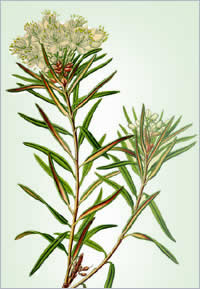 |
2007 has been an exciting time for beer. With a public increasingly interested in craft brewing, we have seen a greater variety and tendency towards experimentation from brewers. Even big brewers are now desperately trying to get a piece of the quality beer market. At a time when craft brewers are upgrading to micro-breweries, and some micro-breweries are selling so well that they can’t be called “micro” any more, the abundance these brewers are enjoying is sparking a creativity in brewing that is at an all-time high.
One unforeseen benefit of this golden age of microbrews is the revival of older, or even ancient traditions of brewing, such as cask-conditioned ales. Cask ales have increasingly come to the fore in increasingly craft-brew oriented bars from coast to coast. According to the New York Times in their article Power in the Cask: New Beers, Old Ways, one beer distributor, Union Beer Distributors, has had their accounts more than triple for cask ale sales in 2007. UBD is the leading cask ale distributor for the New York metropolitan area.
In addition to cask ales, recipes for ancient beers have been re-surfacing in the commercial market as a trend. While some varieties have been on sale for many years, such as the Trappist Ales from the monasteries of Belgium and the Netherlands, each year we are seeing more and more ancient recipes on the shelf. Fraoch, the Gruit-style Heather Ale of Scotland was perhaps the first of these ancient recipes to be re-born in a commercial venue. One of the most ancient recipes being re-created recently is Dogfish Head Breweries’ Midas Touch Golden Elixir. This beer is made from the oldest as-of-yet discovered beer of the ancients. According to the Dogfish Head website, their Midas Touch Golden Elixir contains:
“…the known ingredients of barley, white Muscat grapes, honey & saffron found in the drinking vessels in King Midas’ tomb! Somewhere between a beer, wine and mead…”
Both of these ales exemplify a distinct brewing trend apart from that of ancient beers re-incarnated, and that is hop-less ale. Hops have dominated the brewers arsenal for about 700 years, and it is only now that we are seeing the return of un-hopped ales. Before hops took over the scene, the most popular herbs used in beer were part of a concoction known as Gruit. Gruit was outlawed during the 16th to 18th centuries throughout most of Europe, but may see a resurgence, despite its euphoric, aphrodisiacal, and cerebrally stimulating properties.
Gluten-free ale is another innovation which is satisfying a niche market the world round. From Belgium comes Green’s, a brewing company that specializes in such ales in many varieties and flavors. In 2007, Green’s gluten-free ales hit the U.S. market with their blend of sorghum, rice, and millet replacing malted barley in their ales.
With all of these innovations in beer, and the new market that is popping up as a result, we are seeing even big brewing conglomerates attempting to jump on the band wagon. But big brewing companies are in a tight bind when trying to enter the high quality beer arena that has traditionally been the domain of micro breweries. Some are trying to market the same old rice padded malt beverage as a micro brew with some tricks: like adding blue food coloring to ale to try and sell their “blueberry” ale. Others are increasing their malt content for their “select” line of beers – but the slow degradation of mass produced beers has reached such a point that many people (myself included) simply cannot believe that these big corporations are capable of putting out a decent beer. One rule of thumb I have always followed is this: any beer that claims to be “best”, or a “premium” beer most certainly ISN’T. It is especially amusing to me when malt liquor is advertised as “premium”. The big brewing corporations that put out such beer have lost all credibility in the eyes of many beer fans.
It will be interesting to see how these trends develop in 2008. Will big beer corporations be able to get in on the beer-of-quality market? Will more ancient beer recipes be commercially available? Will gluten-free beer technology usurp barley? Will Gruit return to the world? All I can say is, our intentions create the world we live in.



